Donnie Darko
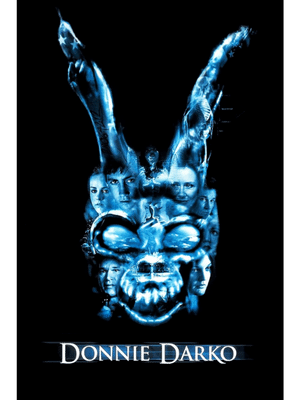
2001, R, 1h 52m
Table of Contents
What Is Donnie Darko About?
A troubled teenager is haunted by visions of a sinister rabbit figure named Frank.
Why You Should Watch Donnie Darko
Donnie Darko, directed by Richard Kelly, is a film that defies easy categorization or summary, weaving through the genres of psychological thriller and science fiction with a touch of teen angst. At its center is Jake Gyllenhaal as Donnie Darko, a troubled teenager whose experiences with visions, time travel, and a sinister rabbit-suited figure challenge not only his understanding of reality but also the stability of those around him. This 2001 cult classic delves deep into the psyche of its protagonist while presenting a complex narrative layered with ambiguity and surrealism.
The film sets itself apart by constructing a detailed portrait of suburban teen life in the late ’80s, encapsulated by the Darko family and the various residents of Middlesex. Donnie, the family’s middle child, is depicted as both deeply disturbed and intensely intelligent. He navigates high school and familial dynamics under the strain of his mental health issues, which are exacerbated by the film’s central narrative mechanism—an airplane engine inexplicably crashing into his bedroom. This event kicks off the movie’s exploration of a tangent universe, an alternate reality that Donnie seems uniquely connected to and affected by.
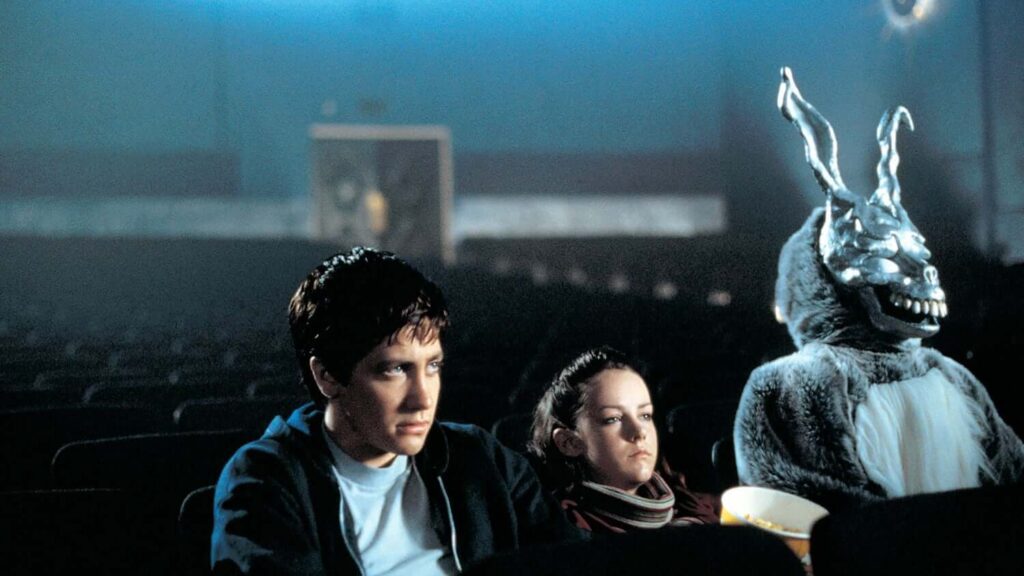
Jake Gyllenhaal’s portrayal of Donnie is nuanced, capturing the vulnerability, brilliance, and confusion of a young man caught in an incomprehensible situation. His performance anchors the film, providing a point of emotional and narrative coherence in a plot that revels in its complexity. Surrounding him, the supporting cast, including Jena Malone as his girlfriend Gretchen and Mary McDonnell and Holmes Osborne as his parents, deliver performances that resonate with authenticity and emotional depth. Each character is drawn with care, contributing to the rich tapestry of Middlesex’s social and familial interactions.
Kelly’s script challenges viewers with its intertwining of personal tragedy, existential dread, and quantum physics, without sacrificing the emotional arcs of its characters. The dialogue often veers into philosophical territory, reflecting Donnie’s own confusion and search for meaning. This is complemented by the dynamics within the Darko household, which are portrayed with a sharpness and warmth that lend a relatability to the family’s supernatural ordeal.
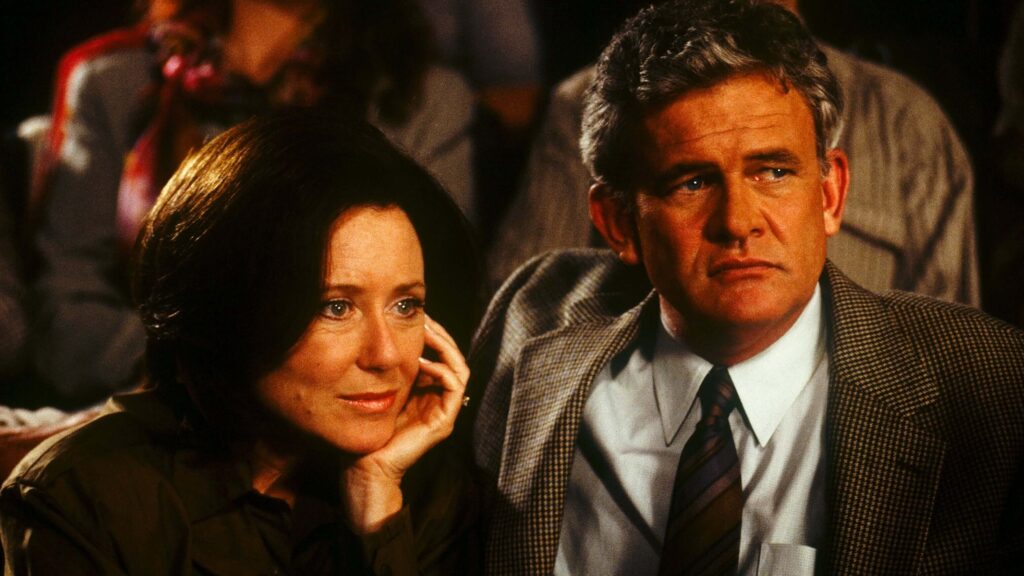
The plot of Donnie Darko is where the film truly becomes a labyrinthine. It cleverly uses the concept of a tangent universe to explore questions of destiny, free will, and morality. The narrative structure is both a puzzle and a ticking clock, winding tightly around itself until the climactic and cathartic resolution. However, the complexity of the storyline, which involves time loops and metaphysical theories, can sometimes alienate viewers who might find the dense plotting a barrier to emotional engagement.
Despite its challenges, Donnie Darko remains a compelling watch. The film’s ability to balance its more esoteric elements with a grounded story of adolescent turmoil is notable. The Darko family, and Donnie’s interactions with them, provide a needed emotional counterbalance to the heavier, more abstract components of the plot.
The Theme of Donnie Darko
Donnie Darko is a film rich in thematic complexity, weaving together elements of teen angst, existential philosophy, mental illness, and science fiction. At its core, the film explores the concept of destiny versus free will. Donnie, the troubled protagonist, grapples with his understanding of the universe and his place within it. The film presents a universe that is deterministic, with Donnie’s visions and the motif of the countdown suggesting that events are preordained. However, there’s a constant interplay with the idea of choice, as Donnie wrestles with the actions he’s compelled to take by Frank, the mysterious figure in a rabbit costume. This duality probes deep philosophical questions about the nature of existence and the extent of human agency.
Another significant theme is the critique of suburban America and the superficiality of consumer culture. Set in the 1980s, a time marked by material excess and social conformity, the film portrays the suburban setting as both comforting and suffocating. Donnie’s family and the community embody a veneer of normalcy that masks deeper dysfunctions. The film satirizes this societal context through characters like Jim Cunningham, whose motivational speeches are revealed to be hollow when his darker secrets are exposed.
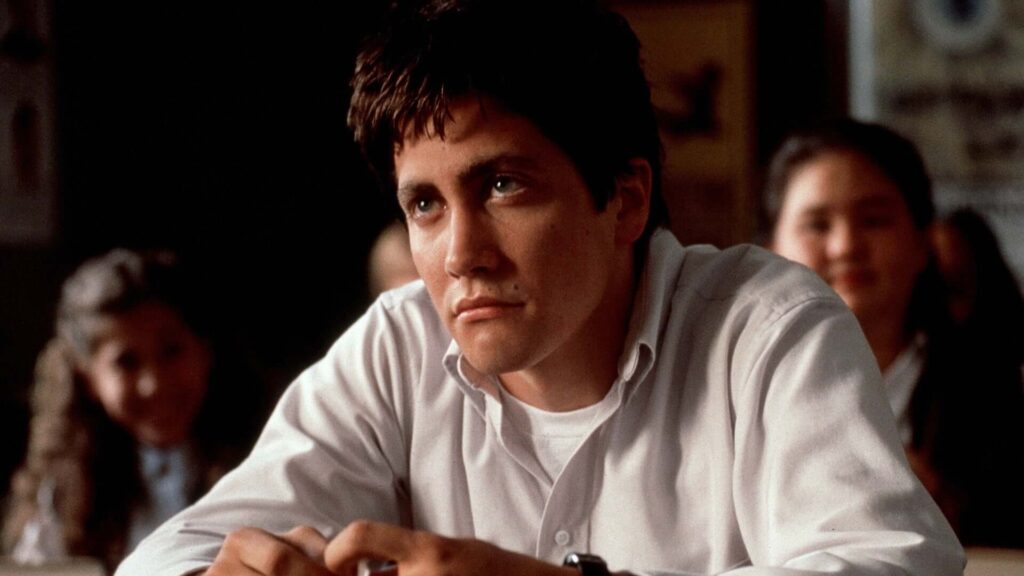
Mental illness is also a central theme, with Donnie’s experiences often blurring the line between reality and hallucination. The film approaches Donnie’s psychological state with ambiguity, leaving open whether his experiences are symptoms of a mental disorder, the result of medication, or genuinely supernatural phenomena. This ambiguity allows for multiple interpretations of the film, each lending a different perspective on Donnie’s journey and the film’s events.
Time travel and alternate realities form a crucial part of the film’s narrative structure and thematic exploration. The tangent universe and the concept of a manipulated living and dead are complex science fiction elements that the film uses to explore questions about fate, time, and the multiverse. These concepts are not just plot devices but are integral in expressing the film’s themes of existential dread and the search for meaning in a chaotic world.
The theme of adolescence and coming-of-age is another key aspect. Donnie, as a character, embodies the confusion and angst of teenage years. His relationships with family, friends, and his love interest, Gretchen, reflect the tumultuous journey of self-discovery and emotional growth that defines adolescence. The film captures the essence of being on the brink of adulthood, where every emotion is heightened, and every experience feels both transient and pivotal.
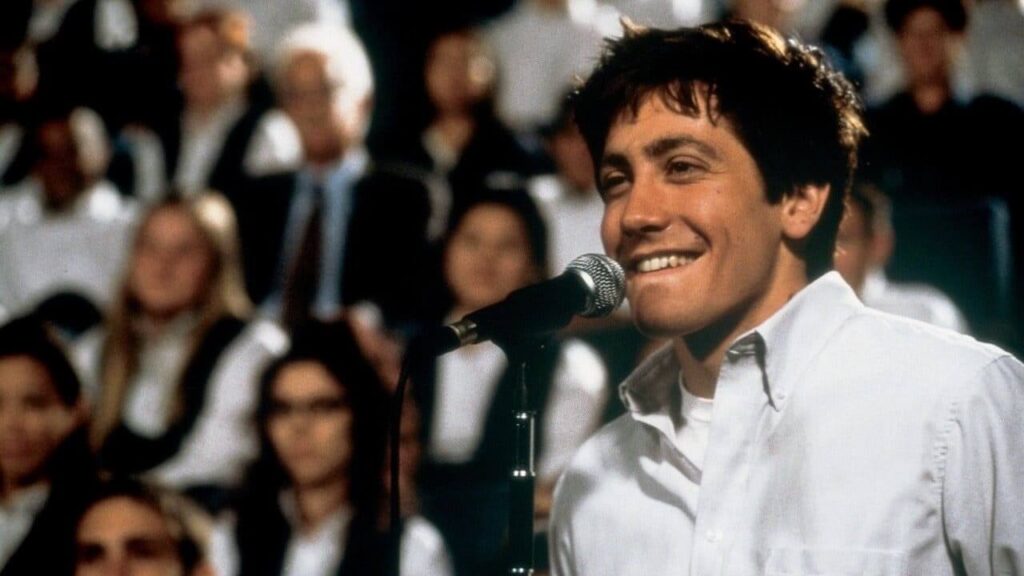
Lastly, Donnie Darko delves into the nature of heroism and sacrifice. Donnie’s eventual acceptance of his role in the grand scheme of things, culminating in his ultimate sacrifice, can be seen as a commentary on the hero’s journey. His choice, in the end, reflects a complex understanding of heroism, one that is not about grand gestures but about understanding and accepting one’s role in the lives of others and the universe.
The Cinematography of Donnie Darko
Donnie Darko is renowned for its distinctive and atmospheric cinematography, masterfully crafted by Steven Poster. The film’s visual style plays a crucial role in underpinning its surreal and dreamlike narrative, blending elements of a suburban teen drama with a dark, almost ethereal science fiction ambiance. Poster’s use of lighting is particularly noteworthy; the film features a contrast between the soft, diffused light of daytime scenes, which captures the mundane reality of suburban life, and the sharp, dramatic shadows of the night scenes, where the film’s more surreal and disturbing elements come to the fore. This duality in lighting mirrors the film’s exploration of alternate realities and the blurred lines between normalcy and the bizarre.
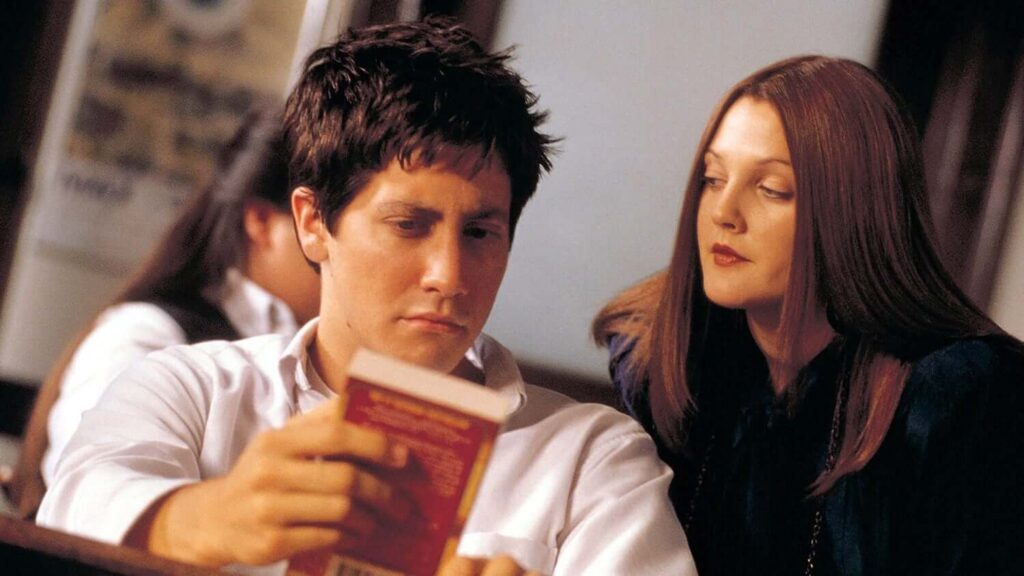
The camera work in Donnie Darko is equally evocative. Poster employs a mix of steady, composed shots for the everyday scenes and more dynamic, often disorienting camera movements during the sequences where Donnie experiences visions or confronts the film’s more abstract concepts. This technique helps to immerse the viewer in Donnie’s subjective experience, creating a sense of instability and unpredictability. The use of slow motion in certain key scenes, such as the iconic school hallway sequence set to “Head Over Heels” by Tears for Fears, further amplifies the dreamlike quality of the film.
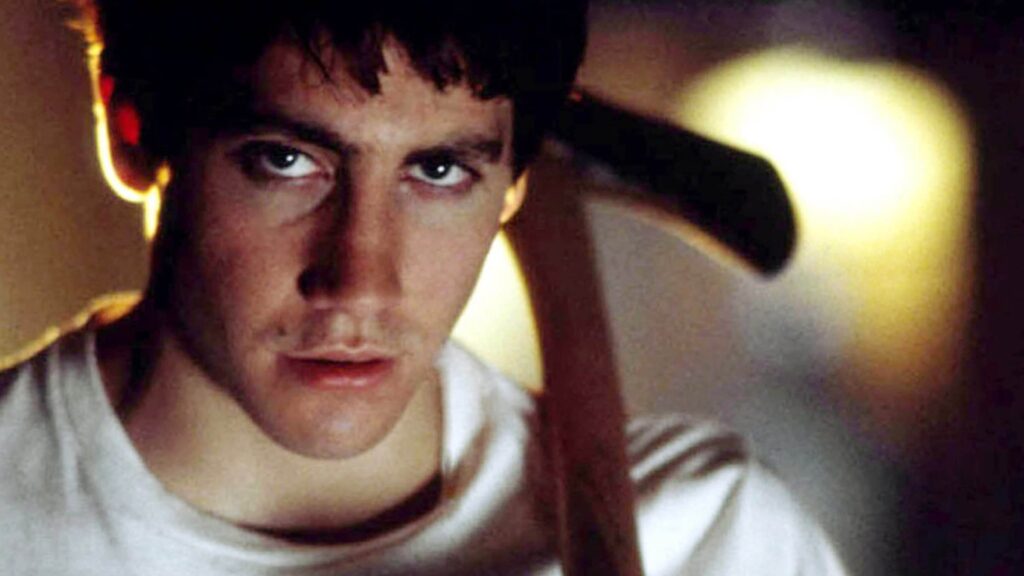
Additionally, the cinematography cleverly utilizes color palettes and framing to accentuate the film’s themes of isolation and existential dread. The suburban landscape is depicted with a muted color scheme, conveying a sense of ennui and confinement, while the more surreal aspects are often highlighted with more vivid colors or stark lighting contrasts. These visual elements combine to create a film that is not only thematically rich but also visually captivating, leaving a lasting impression on the viewer.
The Soundtrack of Donnie Darko
The soundtrack of Donnie Darko, a key element of the film’s haunting atmosphere, is a blend of an evocative score by Michael Andrews and a selection of carefully chosen 1980s pop songs that resonate with the film’s themes and setting. Andrews’ original score is characterized by its minimalist, ethereal quality, using a combination of ambient sounds and melodic piano pieces to underscore the film’s mood of surreal melancholy and existential angst. The score’s subtlety and sparse arrangement effectively complement the film’s introspective and often eerie tone.
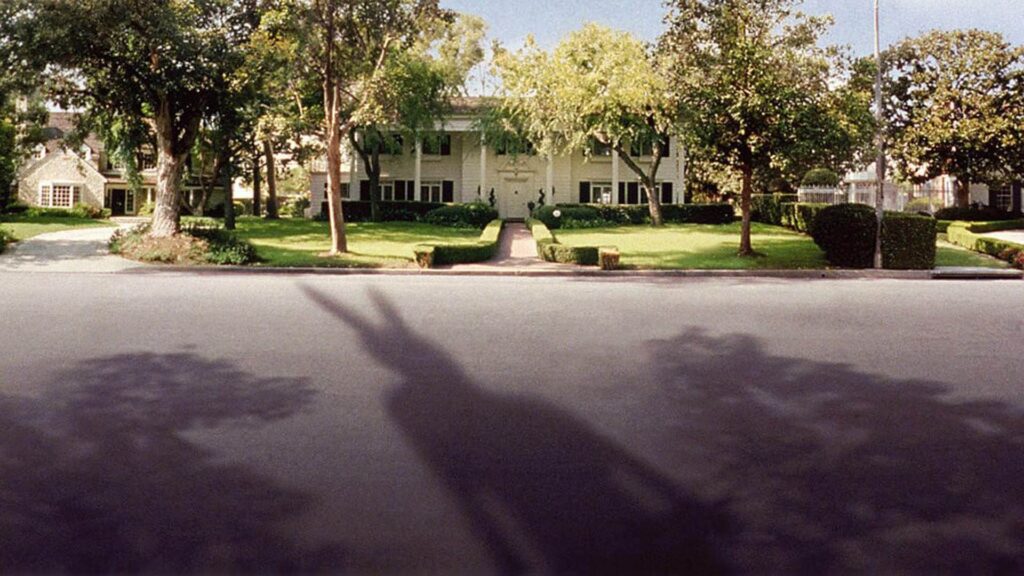
In addition to the original score, Donnie Darko is notable for its use of period-specific pop songs that enhance its 1980s suburban setting and deepen the emotional impact of key scenes. These include:
- “Mad World” by Tears for Fears (later covered by Gary Jules for the film): This song plays a pivotal role, particularly the Gary Jules version, which features in the film’s climax. Its melancholic melody and introspective lyrics perfectly encapsulate the film’s themes of alienation and confusion.
- “Head Over Heels” by Tears for Fears: Used in a memorable tracking shot through the high school, this song sets the tone for the film’s exploration of adolescent life.
- “The Killing Moon” by Echo & the Bunnymen: Opening the film, this song sets a moody and foreboding tone, hinting at the darker elements of the story.
- “Notorious” by Duran Duran: This track adds to the film’s authentic ’80s feel, playing in a party scene.
- “Love Will Tear Us Apart” by Joy Division: Featured in the background of a key scene, the song’s themes of emotional turmoil and division resonate with the film’s narrative.
The soundtrack’s combination of an atmospheric score and iconic ’80s pop songs creates a rich auditory backdrop that contributes significantly to the film’s unique and enduring appeal. You can listen to a playlist inspired by the film below.
The Cast of Donnie Darko
- Jake Gyllenhaal as Donnie Darko – A troubled high school student who experiences visions of a mysterious figure in a rabbit costume and grapples with concepts of time travel and alternate realities.
- Jena Malone as Gretchen Ross – Donnie’s love interest who is new to the school.
- Mary McDonnell as Rose Darko – Donnie’s mother, who is caring and concerned for her family amidst the increasing strangeness surrounding her son’s behavior.
- Holmes Osborne as Eddie Darko – Donnie’s father, who is supportive and tries to connect with his son despite the growing turmoil.
- Maggie Gyllenhaal as Elizabeth Darko – Donnie’s older sister, who deals with her own issues and the family’s challenges.
- Daveigh Chase as Samantha Darko – Donnie’s younger sister, a member of the “Sparkle Motion” dance group and generally oblivious to the strange events unfolding around her.
- James Duval as Frank Anderson / Frank the Rabbit – The mysterious figure in a rabbit suit who guides and manipulates Donnie through his visions.
- Drew Barrymore as Karen Pomeroy – Donnie’s English teacher, who introduces him to literature that challenges his understanding of reality and his own existence.
- Patrick Swayze as Jim Cunningham – A motivational speaker and self-help guru who becomes a pivotal figure in the town’s community and in Donnie’s questions about morality and hypocrisy.
- Noah Wyle as Prof. Kenneth Monnitoff – The high school science teacher who discusses with Donnie the concepts of time travel and the universe.
- Katharine Ross as Dr. Lilian Thurman – Donnie’s psychiatrist who tries to help him navigate his troubling hallucinations and fears about the future.
- Beth Grant as Kitty Farmer – A conservative gym teacher at Donnie’s school who champions the motivational speaker’s ideologies and clashes with Donnie’s worldview.
The Filmmakers of Donnie Darko
- Richard Kelly: Director and Writer
- Sean McKittrick: Producer
- Nancy Juvonen: Producer
- Adam Fields: Producer
- Steven Poster: Cinematographer
- Sam Bauer: Editor
- Michael Andrews: Music Composer
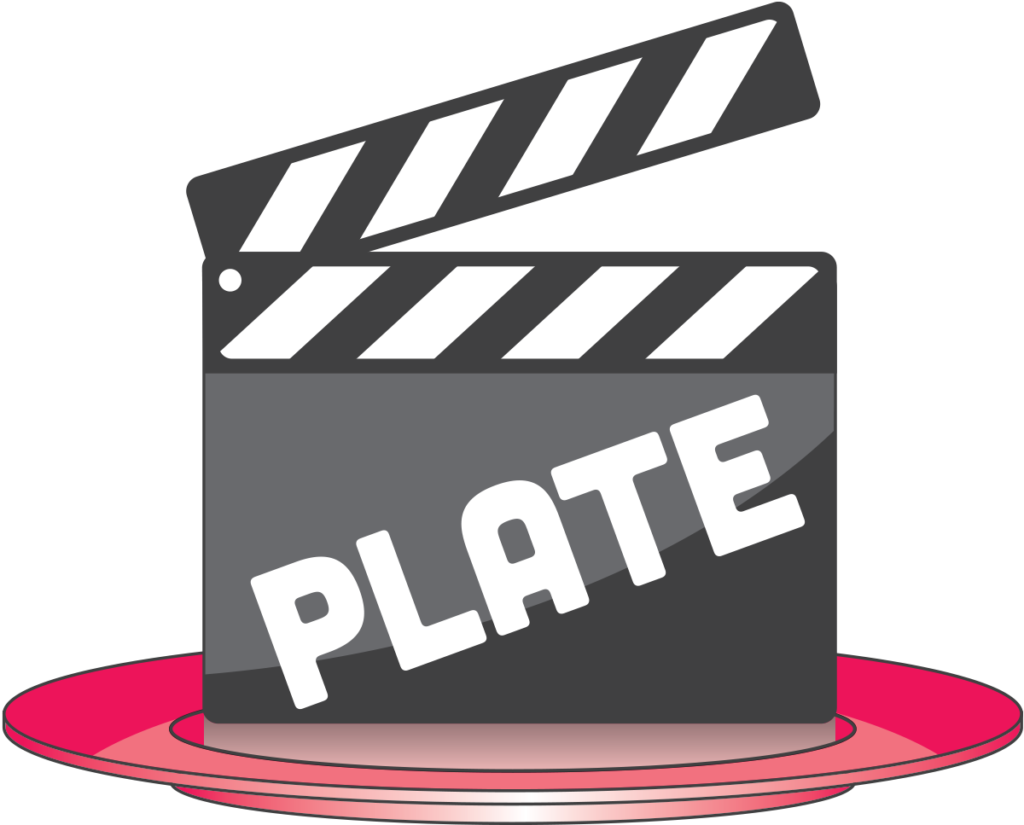
Carrort Cake Whoopie Pie

Inspiration
Frank The Rabbit
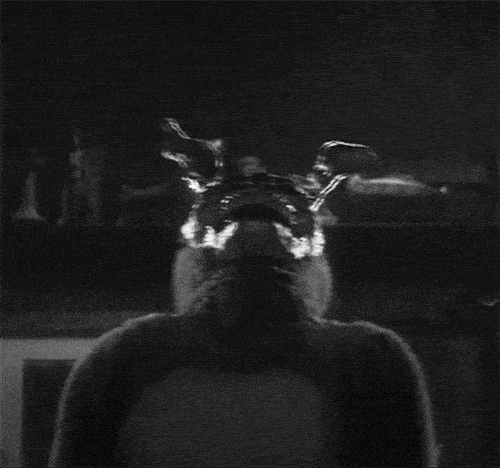
More About Donnie Darko
Donnie Darko was primarily filmed in the summer of 2000 across several locations in Southern California. Despite the film’s setting in the fictional town of Middlesex, Virginia, the production utilized the diverse landscapes and suburban backdrops of California to bring its eerie narrative to life.
The majority of the outdoor scenes were shot in Long Beach, California. This city provided the quintessential suburban environment that was crucial for depicting the 1980s Middlesex. The house that served as the Darko family home is actually located on Coveney Trail in Long Beach. This house becomes a central piece in the movie, especially notable in the scene where a jet engine crashes into Donnie’s bedroom.
Other key locations included Loyola High School, a Jesuit preparatory school located just west of downtown Los Angeles, which stood in for the fictional Middlesex High School. The school’s classic architecture and spacious grounds helped authentically depict a typical American high school setting from the late 1980s.
Additionally, scenes involving the movie theater and the iconic cinema marquee displaying “The Last Temptation of Christ” and “Evil Dead” were filmed at the Aero Theatre in Santa Monica, which adds to the film’s period-specific atmosphere.
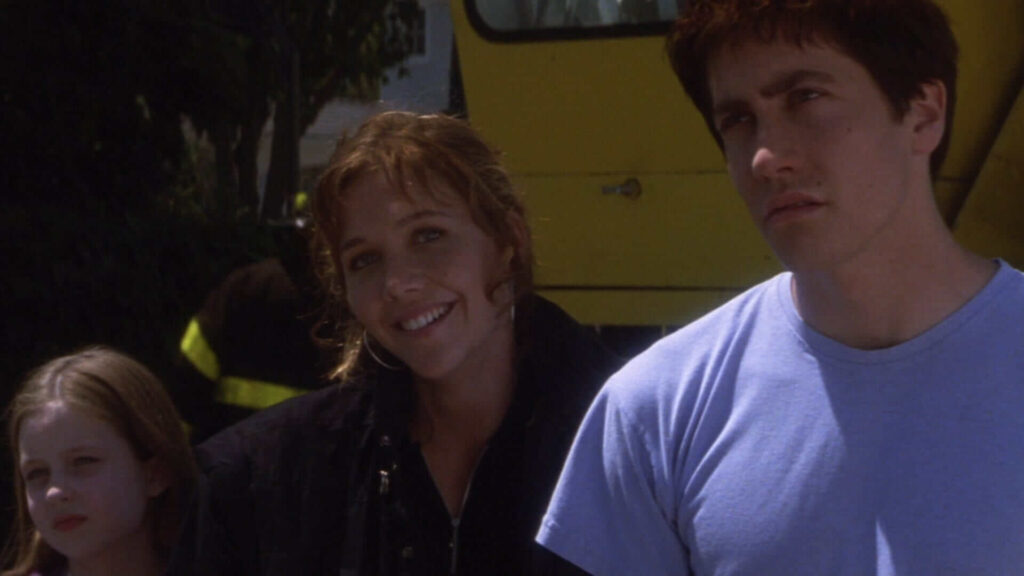
Donnie Darko, played by Jake Gyllenhaal, is portrayed as a teenager who is experiencing significant mental health issues. Early in the film, it is revealed that he is under psychiatric care and has been diagnosed with paranoid schizophrenia. Donnie exhibits symptoms such as hallucinations—both auditory and visual—as he frequently talks to a figure only he can see: Frank, a man in a grotesque rabbit costume. He also experiences delusions, another symptom consistent with schizophrenia.
However, the depiction of schizophrenia in Donnie Darko is heavily intertwined with the film’s exploration of complex themes like time travel, alternate realities, and metaphysical phenomena, which blur the lines between what might be symptomatic of schizophrenia and what pertains to the supernatural or science fiction elements of the plot. The film does not offer a clear-cut clinical portrayal of schizophrenia; instead, it uses the idea of mental illness to deepen the mystery and ambiguity of Donnie’s experiences.
The narrative ultimately leaves it up to the audience to interpret whether Donnie’s experiences are manifestations of a mental illness, the result of supernatural events, or a combination of both. This ambiguity is central to the film’s appeal and complexity, making Donnie Darko a subject of much discussion and analysis since its release.

